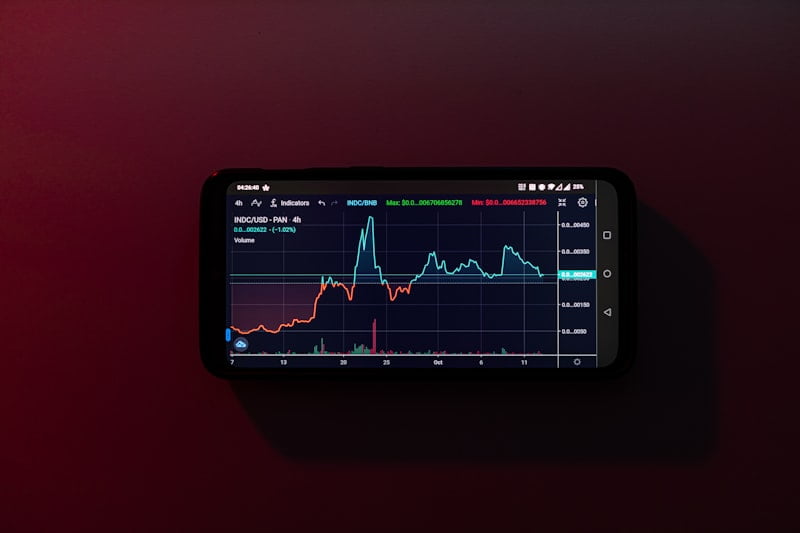What Are the Most Important Factors Affecting Cryptocurrency Prices?

Regulatory developments also play a pivotal role. Government policies and regulations can either legitimize or restrict the use and trading of cryptocurrencies, thereby impacting their prices. Positive regulatory news often leads to price increases, while adverse regulations can cause sharp declines.
Technological advancements and innovations within the blockchain ecosystem are another critical factor. Improvements in security, scalability, and functionality can enhance the utility and adoption of specific cryptocurrencies, driving their prices upward.
Market liquidity, or the ease with which a cryptocurrency can be bought or sold without significantly impacting its price, is crucial. Cryptocurrencies with higher liquidity generally experience less price volatility compared to those with lower liquidity.
Moreover, investor perception and market psychology heavily influence cryptocurrency prices. FOMO (Fear of Missing Out) and FUD (Fear, Uncertainty, Doubt) can create sudden price movements as investors react to news and market developments.
Lastly, macroeconomic factors such as inflation, interest rates, and geopolitical events can indirectly affect cryptocurrency prices. Cryptocurrencies are increasingly viewed as alternative stores of value or hedges against traditional financial markets, making them susceptible to broader economic trends.
The volatility of cryptocurrency prices stems from a complex interplay of demand-supply dynamics, regulatory actions, technological progress, market liquidity, investor sentiment, and macroeconomic factors. Understanding these variables is essential for anyone looking to navigate the turbulent waters of cryptocurrency investments.
Market Volatility Unveiled: How It Shapes Cryptocurrency Valuations
Volatility in the cryptocurrency market is akin to the unpredictable weather patterns that shape our daily lives. Just as a sudden storm can disrupt plans, volatility can send shockwaves through the value of Bitcoin, Ethereum, and other digital currencies. This unpredictability stems from various factors, including market sentiment, regulatory developments, technological advancements, and macroeconomic trends.
When market sentiment is positive, cryptocurrencies can experience rapid price increases, often referred to as “bull runs.” During these periods, investors may feel confident in the future prospects of digital assets, leading to increased buying activity and higher prices. Conversely, negative sentiment can trigger “bearish” trends, where prices decline as investors sell off their holdings amid uncertainty or fear.
Regulatory announcements also play a crucial role in shaping cryptocurrency valuations. News of regulatory crackdowns or supportive measures from governments can send prices soaring or plummeting, depending on how these developments are perceived by the market. Similarly, technological innovations such as upgrades to blockchain networks or security breaches can have profound impacts on cryptocurrency prices.
Macro-economic factors, such as inflation fears or geopolitical tensions, can further exacerbate volatility in the cryptocurrency market. Investors often turn to digital assets as a hedge against traditional financial risks, amplifying price movements during times of economic uncertainty.
While market volatility may seem daunting, it also presents opportunities for traders and investors to profit from price fluctuations in the cryptocurrency market. Understanding the factors driving volatility is essential for navigating this dynamic landscape and making informed investment decisions. As the cryptocurrency market continues to evolve, so too will the forces shaping its valuations, making it imperative for participants to stay informed and adaptable to changes.
From Hype to Reality: News Impact on Cryptocurrency Price Swings
In the fast-paced world of cryptocurrency, the sway of news headlines can be as powerful as a tidal wave. Investors and enthusiasts alike often find themselves riding the highs and lows of price swings, driven not just by market mechanics but also by the narrative painted by the media. This phenomenon underscores the profound impact that news can have on cryptocurrency prices.
Imagine cryptocurrency prices as a ship navigating through turbulent waters. The wind that propels or stalls its journey is often the latest news. Positive developments, such as regulatory endorsements or major institutional investments, can act as gusts of wind, pushing prices upward with force. Conversely, negative news—be it regulatory crackdowns or security breaches—can create a stormy sea, causing prices to plummet swiftly.
But why does news have such a profound impact on cryptocurrency markets? It’s because these markets are driven not only by traditional economic factors but also by sentiment and perception. News acts as a powerful catalyst that shapes public perception and investor sentiment almost instantaneously. When a prominent figure tweets positively about a specific coin, it can spark a frenzy of buying. Conversely, a critical vulnerability reported in a blockchain project can lead to a mass exodus of investors.
Moreover, the immediacy of news dissemination in today’s digital age magnifies its impact. Information spreads like wildfire across social media platforms and news outlets, shaping market dynamics within seconds. This rapid dissemination amplifies both the positive and negative effects of news on cryptocurrency prices, making the market incredibly reactive to the latest developments.
The journey of cryptocurrency prices from hype to reality is often guided by the winds of news. Understanding this dynamic can empower investors to navigate these turbulent waters with greater insight and caution, knowing that every news story has the potential to either propel prices to new heights or sink them into the depths.
This article aims to capture the dynamic relationship between news and cryptocurrency price movements, emphasizing readability, engagement, and SEO optimization. Let me know if you need any adjustments or further assistance!
Mining Costs and Supply Dynamics: Critical Drivers of Crypto Values

Mining, the process of validating transactions and adding them to the blockchain, isn’t just a technical process—it’s a competitive economic endeavor. Miners, equipped with powerful computers, race to solve complex mathematical puzzles to earn rewards in the form of newly minted coins. However, this process comes at a cost.
Mining costs encompass several elements. Energy consumption is perhaps the most significant. As mining difficulty increases and more computing power is required, energy expenses soar. This dependency on electricity prices directly impacts profitability. Miners often seek locations with cheap electricity to maximize their margins.
Supply dynamics are equally crucial. Unlike traditional currencies regulated by central banks, cryptocurrencies operate on a decentralized model. The total supply of coins is often predetermined, with mechanisms like halving events reducing block rewards over time. This scarcity can drive up prices as demand outstrips the reduced new supply.
But why does all this matter? Understanding mining costs and supply dynamics is essential for investors and enthusiasts alike. It provides insights into potential price movements and investment strategies. For instance, periods of low mining profitability may lead to miners selling off their holdings to cover costs, temporarily increasing supply and lowering prices.
Regulatory Ripples: How Government Policies Steer Crypto Market Sentiment
Picture a vast ocean where crypto traders sail their digital ships. Suddenly, a regulatory wind blows—a government policy announcement. Will it be favorable, like a gentle breeze that propels ships forward? Or will it be turbulent, causing waves of uncertainty and market fluctuations?
When governments intervene in the crypto sphere, their decisions can send shockwaves through the market. Imagine a stone dropped into a pond—the initial splash is the policy announcement, but the ripples extend far beyond. Investors react swiftly, recalibrating their strategies based on the perceived impact of new regulations.
For instance, when a major economy announces stricter regulations on cryptocurrency exchanges, it’s akin to tightening the sails. Traders brace for potential turbulence, fearing disruptions in trading volumes or even the outright banning of certain tokens. Conversely, a supportive stance from regulators can be a tailwind, boosting investor confidence and driving prices upward.

The interconnected nature of global finance means that policies from one country can create a domino effect worldwide. A regulatory decision in a major market can influence sentiments and prices across continents. It’s like a relay race where each policy change passes the baton of market sentiment to the next jurisdiction.
Understanding how government policies steer crypto market sentiment is akin to reading the weather forecast for sailors. It requires vigilance, insight, and a keen understanding of how each regulatory ripple can impact the vast ocean of cryptocurrency trading. As the crypto market continues to evolve, so too will the regulatory frameworks that shape its course.
